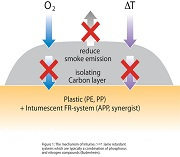Fiber: full name three-dimensional spiral crimped hollow fiber, generally single hole. Four holes. Seven holes. Nine holes. Ten holes, etc. Silk: bright and white, soft to the touch, elastic, and has a strong hygroscopic function. Silk is an animal protein fiber containing various amino acids required by humans to enhance cell vitality and promote skin metabolism, especially for arthritis. Certain health effects. Wool: Excellent air permeability. Even if it is used all the year round, it still maintains its comfort. According to the research, wool can absorb 30% of its weight of moisture. When it is covered, it can be adjusted to proper humidity, not too stuffy, or The feeling of dampness is not comfortable. Down: smooth and full, not easy to break cotton, down is the lightest, warmest, air-filled filler compared to other fibers. The innate advantage is that the fiber is three-dimensional, soft and elastic. It contains the most air and fluffy. The best degree, in addition, the recovery elasticity is excellent, the down fiber can be compressed and changed with the quilt expansion, forming an air flow, deriving human sweat, inhaling fresh air, making the human body feel extra dry and comfortable.
Product List
aluminium trihydrate (ATH)
21645-51-2
magnesium hydroxide (MDH)
1309-42-8
antimony trioxide (ATO)
1309-64-4
Zinc borate
1332-07-6
Melamine polyphosphate (MPP)
218768-84-4
Melamine phosphate (MP)
20208-95-1
Melamine Cyanurate(MCA)
37640-57-6
68333-79-9
Introduction
The most common inorganic flame retardants are the hydroxides or aluminium and magnesium. Aluminium trihydroxide (ATH) is by far the most widely used Flame Retardant on a tonnage basis. It is inexpensive, but usually requires higher loadings in polymers of up to more than 60%, because the flame retardant mechanism is based on the release of water which cools and dilutes the flame zone. Magnesium hydroxide (MDH) is used in polymers which have higher processing temperatures, because it is stable up to temperatures of around 300 C versus ATH which decomposes around 200 C.
Fine precipitated ATH and MDH (grain size < 2um) are used in melt compounding and extrusion of thermoplastics like cable PVC or polyolefins for cables. For use in cable, ATH and more often MDH are coated with organic materials to improve their compatibility with the polymer. Coarser ground and air separated grades can be used in liquid resin compounding of thermosets for electrical applications, seats, panels and vehicle parts.
A number of other inorganic substances show flame retarding effects and are used in commercial applications. Most of them are used as synergists i.e. they enhance the performance of other flame retardants or they are used for specific effects like the suppression of smoke formation. For example, borates are used as mixtures of boric acids and borax as flame retardants for cellulose (cotton) and of zinc borate for PVC and other plastics like polyolefins, elastomers, polyamides, or epoxy resins. In halogen-containing systems, zinc borate is used in conjunction with antimony oxide, while in halogen-free systems it is normally used in conjunction with aluminium trihydroxide, magnesium hydroxide, or red phosphorus. In some particular applications zinc borate can be used alone. Boron containing compounds act by stepwise release of water and formation of a glassy coating which protects the surface.
Zinc compounds were initially developed as smoke suppressants for PVC (Zinc hydroxystannate). Later it was found that they also act as flame retardants in certain plastics mainly by promoting char formation.
Intumescent Flame Retardant systems expand to produce foams. They are used as coatings not only to protect combustible materials such as wood and plastics, but also steel structures in buildings, because steel loses its strength when exposed to high temperatures in a fire. The intumescent effect is achieved by combining an acid source like ammonium polyphosphate, a source of carbon, compounds which release noncombustible gases for blowing the foam on thermal decomposition and resin binders to stabilise the foam.
Expandable graphite is manufactured from flake graphite by treatment with strong acids like sulphuric or nitric acid. The acid is trapped in the crystal layers of the graphite ("intercalated"). When it is heated, the graphite starts to expand up to several hundred cm3 per gram, forming a protective layer for the polymer. Expandable graphite is used in plastics, rubbers (elastomers), coatings, textiles and especially in polymeric foams. To achieve an optimum flame retarding effect, the use of synergists like ammonium polyphosphate or zinc borate is often necessary. The black colour of graphite limits its applicability in some cases.
Nanocomposites have been gaining increasing attention since the late 1990s as potential new flame retardants. Nanocomposites
are polymer layered silicates based on aluminosilicate clay minerals like montmorillonite, composed of layers with gaps (gallery spaces) in between. These silicates have the ability to incorporate polymers. Research with nanocomposites has focused on plastics like polymethylmethacrylate (PMMA), polypropylene, polystyrene, and polyamides. Nanocomposites particularly prevent dripping and promote char formation. Therefore, they have been used as synergists in some polymer / flame retardant combinations. However, they require special processing and for the time being are not considered to become viable stand-alone flame retardants.
Other inorganic fillers like talcum or chalk (calcium carbonate) are sometimes denoted as flame retardants, but they do not specifically interact with the ignition process. On the contrary, simply by diluting the combustible polymer they reduce its flammability and fire load.
Inorganic Flame Retardant Additives, Inorganic Flame Retardant Polymers, Inorganic Flame Retardant Chemicals,Ammonium Polyphosphate Shandong Novista Chemicals Co.,Ltd (Novista Group) , http://www.novistachem.com

